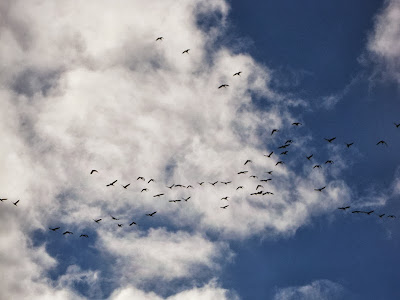Following our success transplanting trailing arbutus from the wild, we discovered a fairly strong desire to create more natural plantings of this treasure on our land. As in business, location is everything and this site was selected for our next attempt. A necessary soil microbe grows among the roots of white pine trees. Adjacent to the lane, water could be easily trucked to this spot. Two large flat stones were placed at the base of the tree to kill off unwanted weeds. All was ready but our arbutus plants failed to produce any seed this summer. That turned out to be a good thing since the large tree branch lying on the ground fell on the same day that the new right of way users cleared growth from along our side of the lane. Had arbutus seed been spread here to endure this trespass my reaction would have been severe.

This field stone wall was placed at the edge of the right of way this week. It is intended to clearly mark where the right of way ends. It also should prevent snow plowing from destroying the arbutus plants that will be placed here next spring. The new right of way users will now have the choice of directing plowed snow downhill over the edge of the lane or forcing it into my new wall. Given the option of doing things the easy and considerate way, or stubbornly fighting for creative freedom, we will wait and see how they choose to act.
The top of this new wall pleases the builder. The stones were placed on the wall as they were found at field's edge. An occasional wobble knob was chiseled off and sometimes a stone was split to reduce its thickness but otherwise the puzzle was completed with raw stone. Gaps between stones are rather small and the top surface approaches flat and smooth. A long comfortable pleasing seat is the result.
Another surprise is the small pile of left over stone. The ground is widely littered with stone as the wall is being built. Usually the pile of unused stone is large. With winter rapidly approaching the work was lessened by placing most of each load of stone in the wall as it was brought here. Final cleanup took only minutes.
If the new wall emerges from winter intact, arbutus plants will be placed between the wall and the base of the tree. A thick layer of decomposing white pine needles will have created the highly acidic soil that supports arbutus growth. Brier plants will be removed and the holes created when their roots are levered out will make excellent planting spots.
There is one nonnative stone in this wall. Near the center, both vertically and horizontally, of the wall, a long light gray stone rests with its unique color standing out in sharp contrast to its neighbors. This stone was a gift from Jane. When we first came to this land, Jane allowed us to remove water worn stone from the bed of her stream. Water polish made these stones strikingly beautiful. At least one of these precious stones finds its way into each of our walls.
Here is a current snap of our transplanted arbutus patch. Placed in the natural soil at the base of a white pine tree, and watered each rainless day for two years, these plants have prospered. We would like to repeat this process in several more suitable locations. Our time here will have been well spent if naturally increasing arbutus plantings propagate on their own.
Arbutus plants are not unique with their fall production of flower buds but we still marvel at that method. No winter snow has fallen yet but the white of the tightly closed flower buds is easily seen now. These buds will open early next spring and we will be here to enjoy their scent. We will also be close by with a small soft paint brush to spread pollen among the ovaries. Seed formation will not be left to chance again.

































